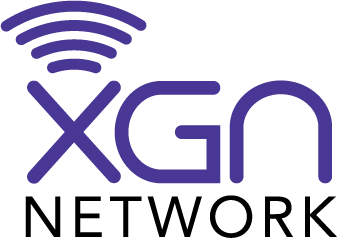5G Broadcast Readies Debut, With ‘SuperFrank’ At The Controls
By Adam Jacobson
11 September, 2023
On Wednesday, at 10:30am Eastern, what is being heralded as “a national first” is poised to transpire. At that time, the XGN Network intends to broadcast its “proof of concept programming stream” and a first-responder data stream.
The action officially launches the first 5G broadcast station in the U.S., and it is located in Boston, where longtime LPTV advocate “SuperFrank” Copsidas is ready to flip the switch to “on.”
WWOO-LD, using Channel 28, will move forward under its experimental FCC license with a dual service of offering Bostonians high-definition TV programming while also delivering “game-changing advances” in public safety and emergency response.
The September 13 launch is the culmination of efforts that XGN, and Copsidas, believe will “confirm 5G’s ability to provide both a programming channel and a platform that can reliably reach first responders and the public when traditional communication networks fail.”
The inaugural 5G broadcast of Milachi Media-owned WWOO-LD, which will come 22 years and 2 days after the 9/11 terrorist attacks on New York and Washington, D.C., will originate from an antenna at the top of One Beacon Street. For everyday viewers, broadcasts from NASA TV can be seen. The bigger story is the delivery of first responder encrypted data — a potential new revenue source for a medium that could see retransmission consent data wither in the coming years.
Following the WWOO-LD launch and pilot and continuing development, this technology is expected to be broadly available in late 2024, XGN Networks believes.
“Pending the successful proof of concept, first responders will have a new outlet to communicate critical information to the public — from tornado warnings to Red Alerts, with a 5G broadcast that keeps delivering even when cell phone service fails,” XGN Networks asserts. “During normal cellular operation, 5G broadcasting can push alerts to mass targets in under one second, getting critical information out about a missing child or safety threat when every second counts. Additionally, when cell phone service is challenged by excessive
use like during a sporting event, concert, parade, or other mass gathering, 5G broadcasting can reach users faster, delivering timely content and the most reliable public safety instructions and updates via its own frequencies directly to the user.”
The 5G Broadcast deployment uses an Ateme encoder, a Westpond Technologies data encoder, Rohde & Schwarz broadcast chain, an exciter, a component that enhances the signal, a transmitter, and Qualcomm development smartphones powered by Nakolos smartphone apps.
A 30-minute live streaming event, featuring the 5G broadcast debut, can be found at XGN.Network.
To be clear, ATSC 3.0 and 5G broadcasting are two very different transmission protocols. ATSC 3.0 has advantages over 5G Broadcasting today with an 8-year head star, and ATSC 3.0 has the ability to provide multiple streams of programming in 4K with Dolby Sound. In contrast, 5G Broadcasting can do one solid 4k programming stream now. “The major advantage of 5G Boradcasting is on the receiver side, going directly to smartphones, tablets, and computers equipped with a 5G chip,” Copsidas said through his LPTV Broadcasters Association late Sunday.
Original article: https://rbr.com/5g-broadcast-readies-debut-with-superfrank-at-the-controls/
